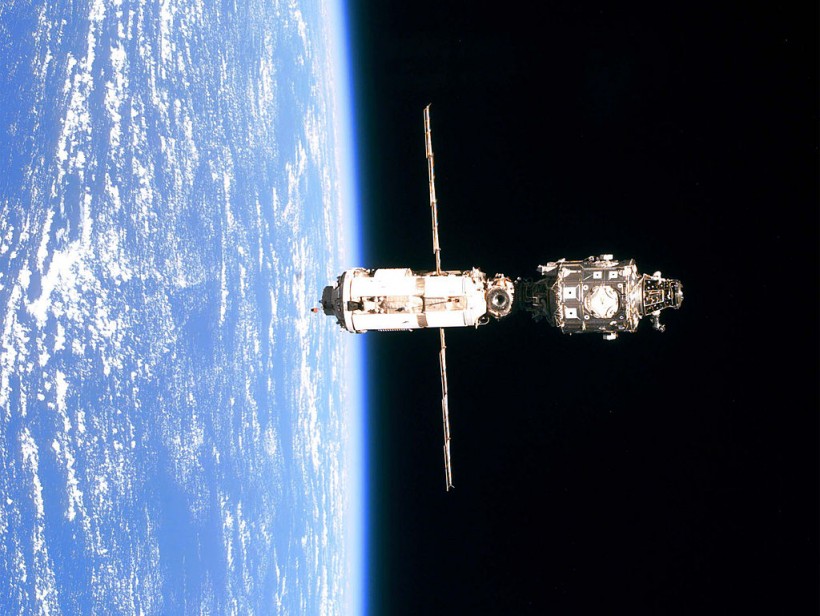The Progress 81 engines on the International Space Station (ISS) fired for 5 minutes and 5 seconds as part of a Pre-Determined Debris Avoidance Maneuver (PDAM) to move the complex further away from the expected path of a fragment from Russian Cosmos 1408 debris.
At 8:25 p.m. EDT, the thrusters were fired, and the maneuver had no effect on station operations. It was anticipated that the fragment would have passed the station without the move within around three miles, according to a blog post by NASA.

(Photo : NASA/Getty Images)
The International Space Station (Iss) Is Backdropped Against The Blue And White Horizon Scene Of Earth And The Blackness Of Space Following Separation From Discovery June 3, 1999.
Avoidance Maneuver
The PDAM left the station in an orbit measuring 264.3 x 255.4 statute miles, elevating it by 2/10 of a mile at apogee and 8/10 of a mile at perigee.
The space agency operates with extreme caution when it comes to avoidance maneuvers. It claims that without the action, the space debris from a Russian satellite would have been 3 miles closer to the ISS, which could spell disastrous effects.
According to NASA, Russia produced 1,500 pieces of debris when it destroyed that spacecraft as part of an anti-satellite weapon test in November 2021.
Interesting Engineering noted that at the time, American officials denounced the missile test as destructive and warned against Kessler Syndrome, which would cause space debris to grow exponentially.
Small particles of debris create more debris when they hit with larger pieces of space shrapnel, increasing the likelihood of further collisions.
Russia is not the only country to be accused of escalating the space debris issue. China has recently been under fire for letting the rocket cores from its Long March 5 launch vehicle degrade into hazardous space debris that could have fallen on populated areas.
The astronomical community has also criticized the US corporation SpaceX, and they have even banded together to demand greater control of the private company's satellite mega-constellation launches.
Read Also: NASA Will Allow Spacewalks Outside the ISS Again After 7 Months
The Space Junk Problem
According to NASA, there are over 500,000 bits of space debris that are between 1 cm and 10 cm in diameter and about 25,000 pieces that are larger than 10 cm in orbit. These debris fragments fly across orbit at up to 33,000 mph, traveling faster than a bullet.
Currently, 30,000 objects larger than 4 inches (10 cm) in Earth orbit are being monitored by the U.S. Global Surveillance Network. Additionally, the European Space Agency said that there are currently one million particles traveling at a speed of 0.4 inches (1 cm) around the planet.
A recent study that was published in Nature Astronomy predicted the probability of fatalities from falling rocket debris during the next ten years.
The authors used mathematical modeling of rocket part inclinations and orbits in space, population density below them, and 30 years' worth of satellite data to determine the locations of rocket debris and other space trash when they came back to Earth.
The researchers discovered that during the next ten years, space debris falling back to Earth will cause slight but significant harm. However, southern latitudes are more likely to experience this than northern ones.
According to the study, there are roughly three times as many chances of a rocket body crashing at the latitudes of Dhaka, Bangladesh, Jakarta, Indonesia, or Lagos, Nigeria than in New York, Moscow, and Beijing.
Related Article: NASA Astronaut Snaps a Stunning Lightning Strike in the Gulf of Thailand
This article is owned by Tech Times
Written by Joaquin Victor Tacla








